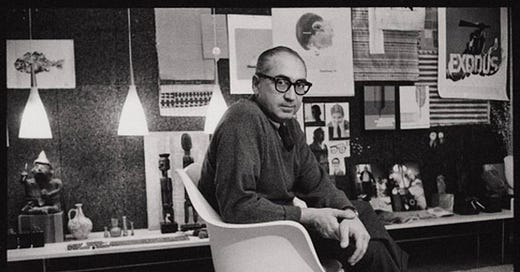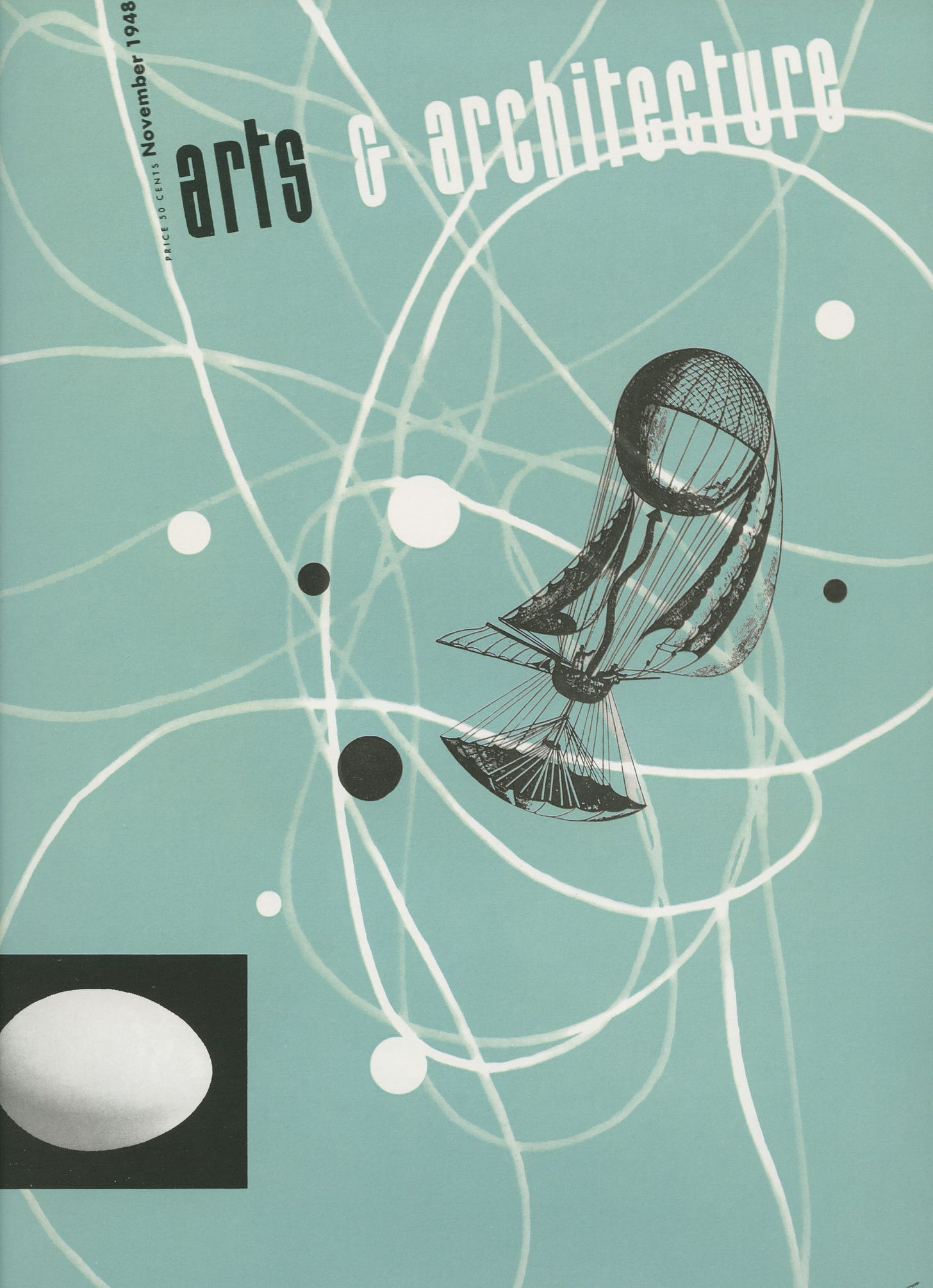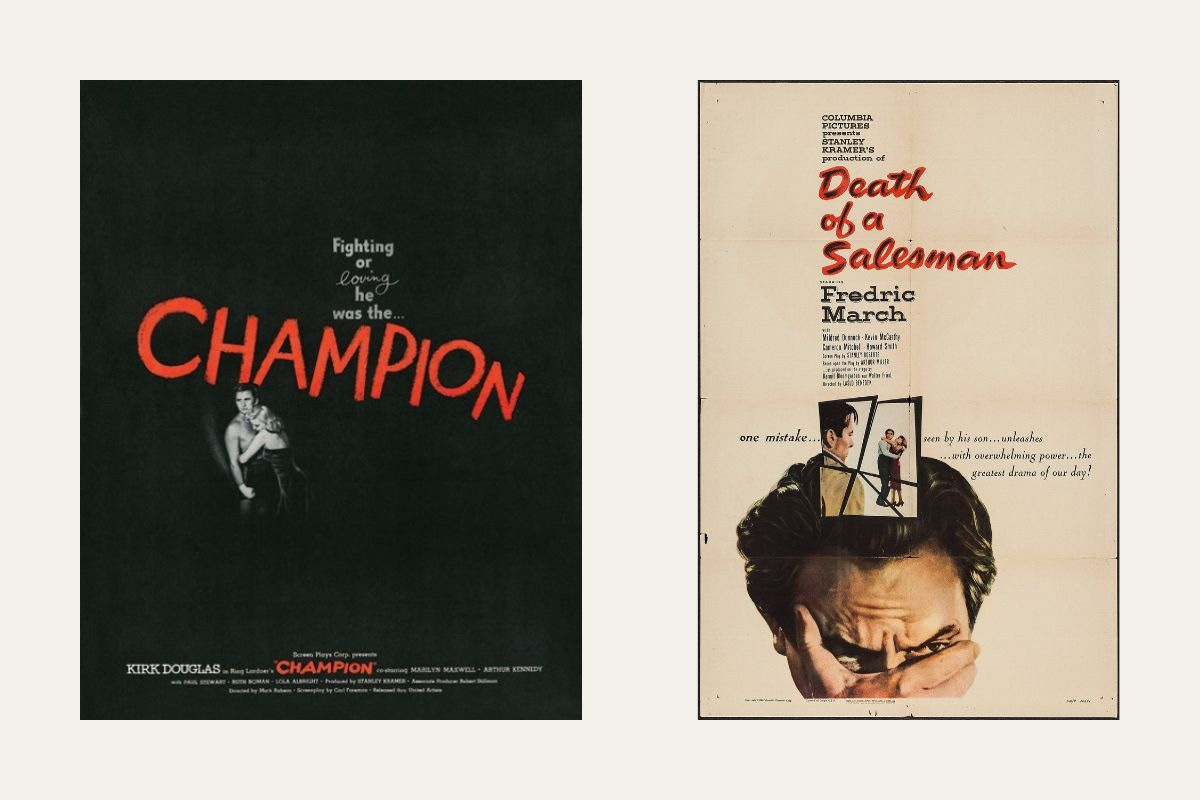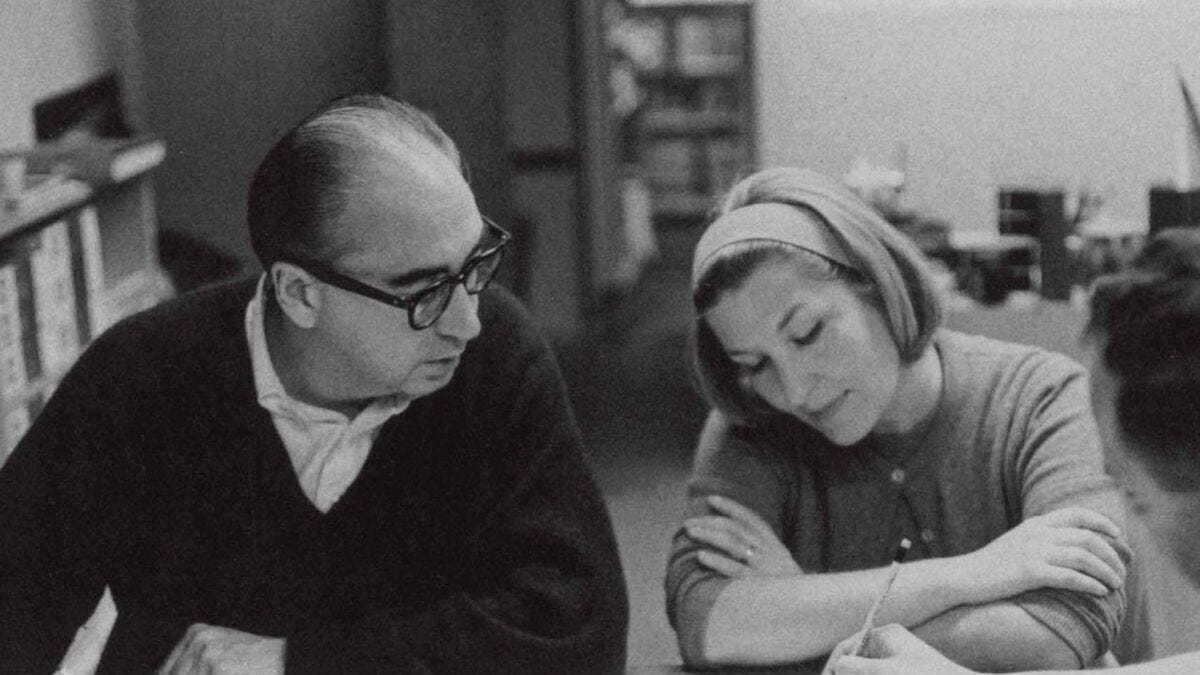To my English speaking readers: since my native language is Spanish, I apologise in advanced for any mistakes that you can find in the English version of this post. Thanks for your support! 😊
I’m a big defender of credit title sequences and I firmly believe that they should always go ahead of the movie. On one hand, because I believe that every professional that takes part in the making of a movie should be acknowledged by the audience. On the other hand (and even more important), I think they can be a fantastic tool to set the mood of the film. And if someone disagree, that someone is not familiar with the works of Saul Bass.
“Saul Bass wasn’t just an artist who contributed to the first several minutes of some of the greatest movies in history, in my opinion, his body of work qualifies him as one of the best filmmakers of this, or any other time”.
Steven Spielberg
Saul Bass was born in Brooklyn, in 1920, from Jewish parents that had emigrated from Eastern Europe to America. From a young age he showed a strong interest in arts, that his parents encouraged by providing him art supplies or taking him to museums, such as the MET or the National History Museum. Later in life, the designer would say that those were the best memories of his childhood.
Although his older sister had been able to attend college, when Saul’s turn came things were much harder. The Depression brought such economical crisis that he had to work to help his family with his earnings, specially after the death of his father, when Saul was 22 years old.
In 1936, Saul got a scholarship that allowed him to take evening classes at the Art Students League, where he was taught (and influenced) by Howard Trafton, a commercial artist influenced by European Modernism, with strong skills in illustration and typography, that would help Saul to set the foundations of his upcoming career.
When Bass finished his studies, unemployment had reached historical levels in New York. Despite of that, he was able to get small jobs related to design and advertising. But, despite being fairly well paid, he was longing for a job that allowed him to be more creative. That’s why, in 1938, when he was offered to work for Warner Brothers, he jumped straight to it.
In 1940 he married his first wife, Ruth Cooper, and had two children in 1942 and 1946. The couple divorced in 1960.
In 1941, his excellent reputation as a designer allowed him to move to Twentieth Century-Fox. But he found film advertising mundane and depressing, and despite his renown talent, he still didn’t have the creative freedom he was longing for. For that reason, in 1944 he made the most important move of his career so far, by accepting an art director position at the prestigious New York agency Blaine Thompson Company.
At the Blaine Thompson Company Saul Bass met the man who would become his biggest influence at the time, Gyorgy Kepes, an Hungarian artist who had worked with the Bauhaus teacher László Moholy-Nagy, who introduced him in the Bauhaus techniques.
During this time, the style of Bass significantly evolved, embracing the keys that would make his style recognisable throughout his career: minimalism, dynamism, interest in spacial tension and importance of typography.
After some time at the agency, Saul Bass would try again in the film business, going back to Warner Brothers, and shortly after, in 1946, the Buchanan Company offered him an art director position in Hollywood.
Los Angeles had become the destination of young artists, writers, designers, directors… and in these years he met personalities such as Man Ray, Bertol Brecht, Thomas Mann or the Eames.
In this period, Saul Bass worked in the advertising campaigns of Chaplin’s Monsieur Verdoux, and many of the films produced by Stanley Kramer at the time: Champion, Death of a Salesman, The Men, Cyrano de Bergerac and many more.
In 1950 he took a position in the agency Foote, Cone & Belding, in which he was solely dedicated to the RKO account, which meant he worked with the owner of the studio, Howard Hughes.
Despite all of that, he hadn’t reached the creative freedom he wanted, and after a couple of years in the position, the sale of RKO gave him the perfect excuse to leave and go solo (although he still took some assignments from Foote, Cone & Belding)
In 1956, Saul Bass hired Elaine Makatura as an assistant, whom he married in 1961, and that would be the beginning of the longest collaboration of his entire career, that would last 40 years (until his death in 1996). Shortly after that, the office became known as Saul Bass & Associates and there began the most prolific period of his career, in which he collaborated with some of the most important filmmakers of all time.
But that’s a story we’ll talk about next week.










